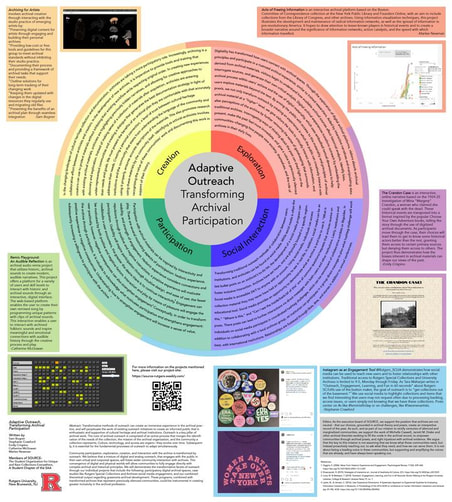
SOURCE at Rutger's presents:
Adaptive Outreach,
Transforming Archival Participation
The projects featured on our poster:
Acts of Freeing Information- Marlee Newman
The Crandon Case- Emily Crispino
Instagram as Engagement Tool- Stephanie Crawford
Remix Playground, An Audible Reflection- Catherine McGowan
Archiving for Artists- Sam Bogner
For more information on SOURCE activities, please click here.
For more information on the Master of Information
Archives and Preservation Concentration program at
Rutgers University, please click here.
